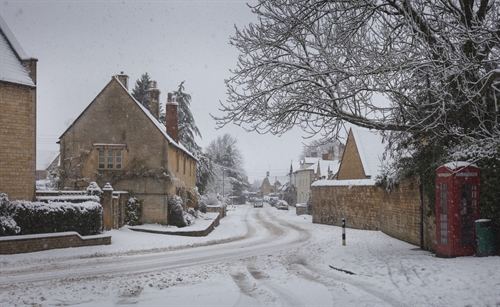Winter conditions add an extra layer of complication to a house move. Here’s a quick run-down of what you need to know about your winter house move.
Book ahead to get the moving day you want
Hiring a professional moving company is the way forward if you know your move is going to be complex. But the best companies and weekend dates get booked up months in advance. Removal companies also see increased demand in the run-up to Christmas as people want to be in their new home for the festive season. The British Association of Removers has a directory of vetted, professional home removers.
Even if you’re not sure exactly which day you want to move, speak to removal companies as soon as you have a rough date. Our post on choosing a removals company has some advice to help you find the perfect moving day help.
Learn safe lifting and carrying before moving home
Before you start packing, look at some resources on safe lifting and carrying to ensure you understand the best ways to move furniture and boxes without hurting yourself. Our blogpost on safe lifting has some pointers to get you started.
Be ready for bad weather
In the UK we often get a spell of snowy weather at the end of January, so if you’ve got a move planned then, have a contingency plan for snow. In any case, consider how heavy rain will affect your move, too. A professional removals company will have the experience and knowledge to protect your domestic goods as far as possible. But if you’re going it alone, think about things like protecting furniture while it is outside with tarpaulins or plastic sheeting. And have plenty of towels ready to dry anything off that needs it.
Safe paths on your moving day
Bad weather can make paths unsafe. A fall, particularly while carrying a heavy load, could leave a helper injured and unable to work – not to mention the potential for damage to your goods. So keep your helpers safe by clearing the path of leaves and ice, or providing grit, brooms and shovels so they can do it.
Keep floors dry to prevent injuries on moving day
Indoors, wet floors are another hazard: clean up wet places, or provide a mop or a lot of paper towels. One option is to split your helpers into outdoor and indoor teams. This should keep wet and mud off the floors.
Make sure your helpers have somewhere to shelter and warm up on their breaks, too. Offer hot drinks and snacks at regular intervals.
How is the outside lighting at your new home?
Bear in mind that there are fewer daylight hours in winter: if you’ve got a long journey to your new home you may find yourself unpacking in the dark. In urban areas, you can rely on streetlights, but in a more rural setting your helpers will be less than happy to be stumbling around in the dark. Consider portable lighting, either purchased or hired, to keep them safe, or split the move over two days to take advantage of the daylight.
Use self-storage to help your move
If you have no choice but to move out of your old home before you can access your new home, then you will have to store your furniture and domestic goods. When it comes to protecting stored domestic goods, insurance is mandatory with many self-storage companies – but you don’t have to take their offering. We can insure your stored goods by the day: perfect if you know you’re only storing for a short while. Get a quote right now.


